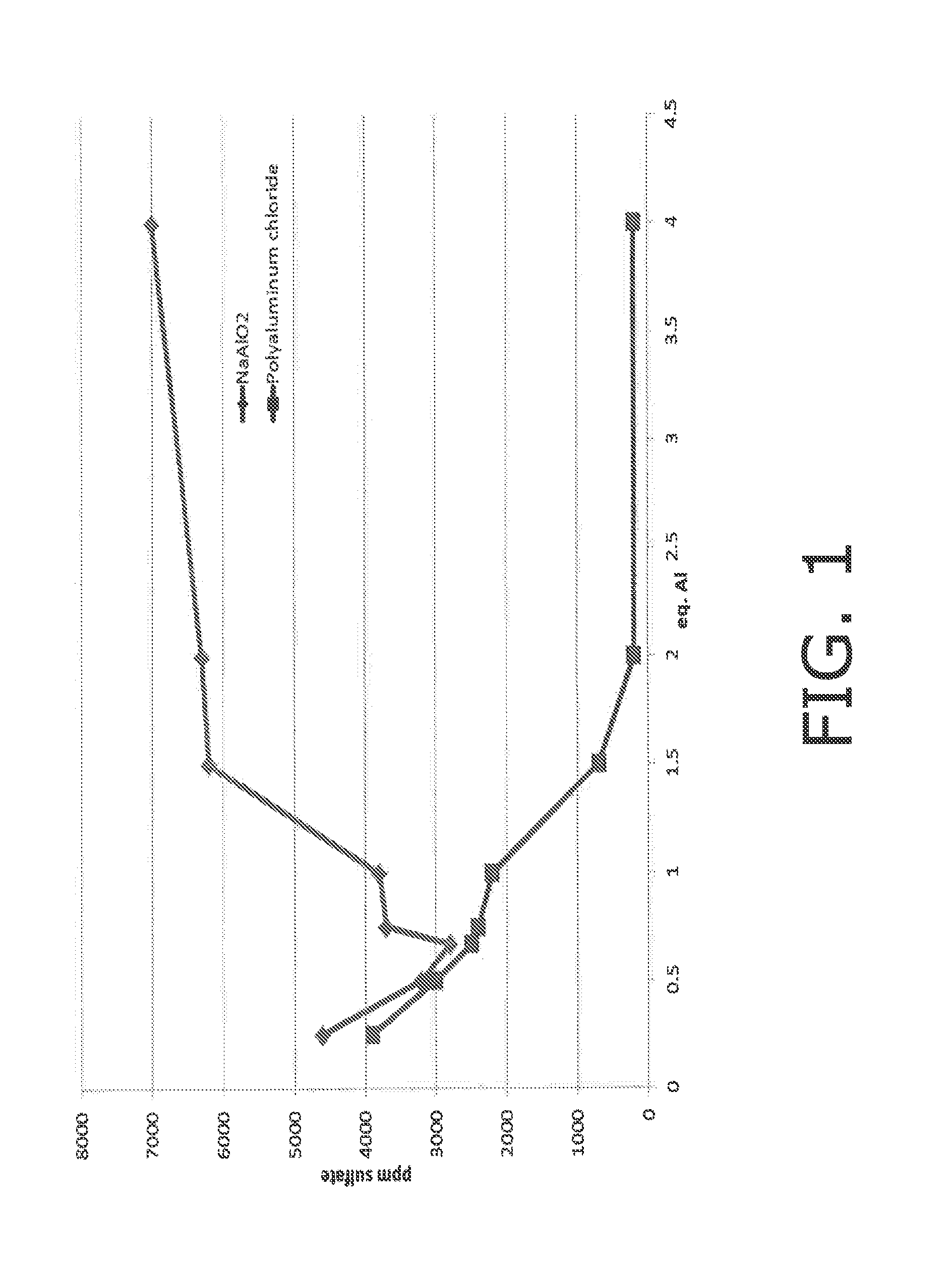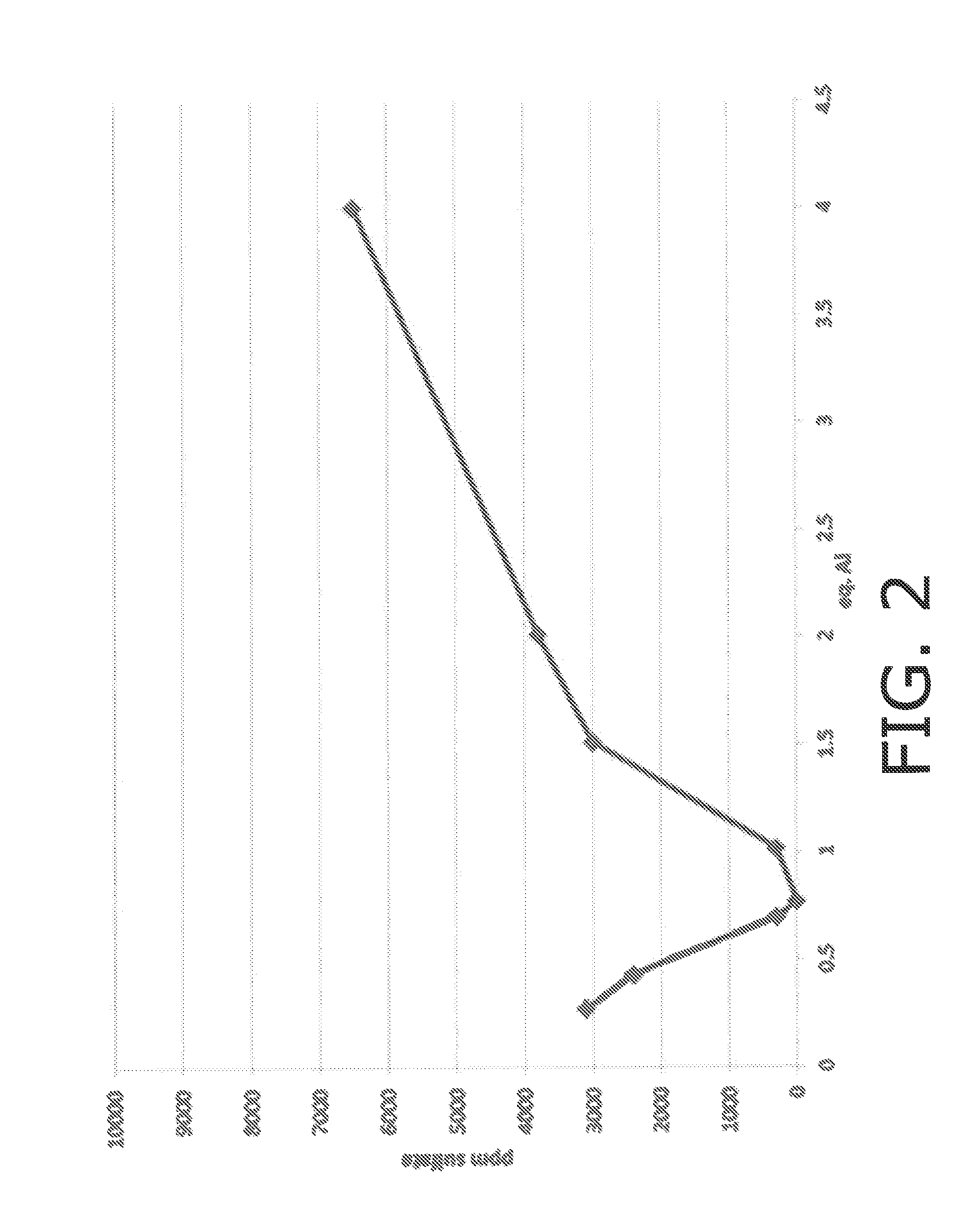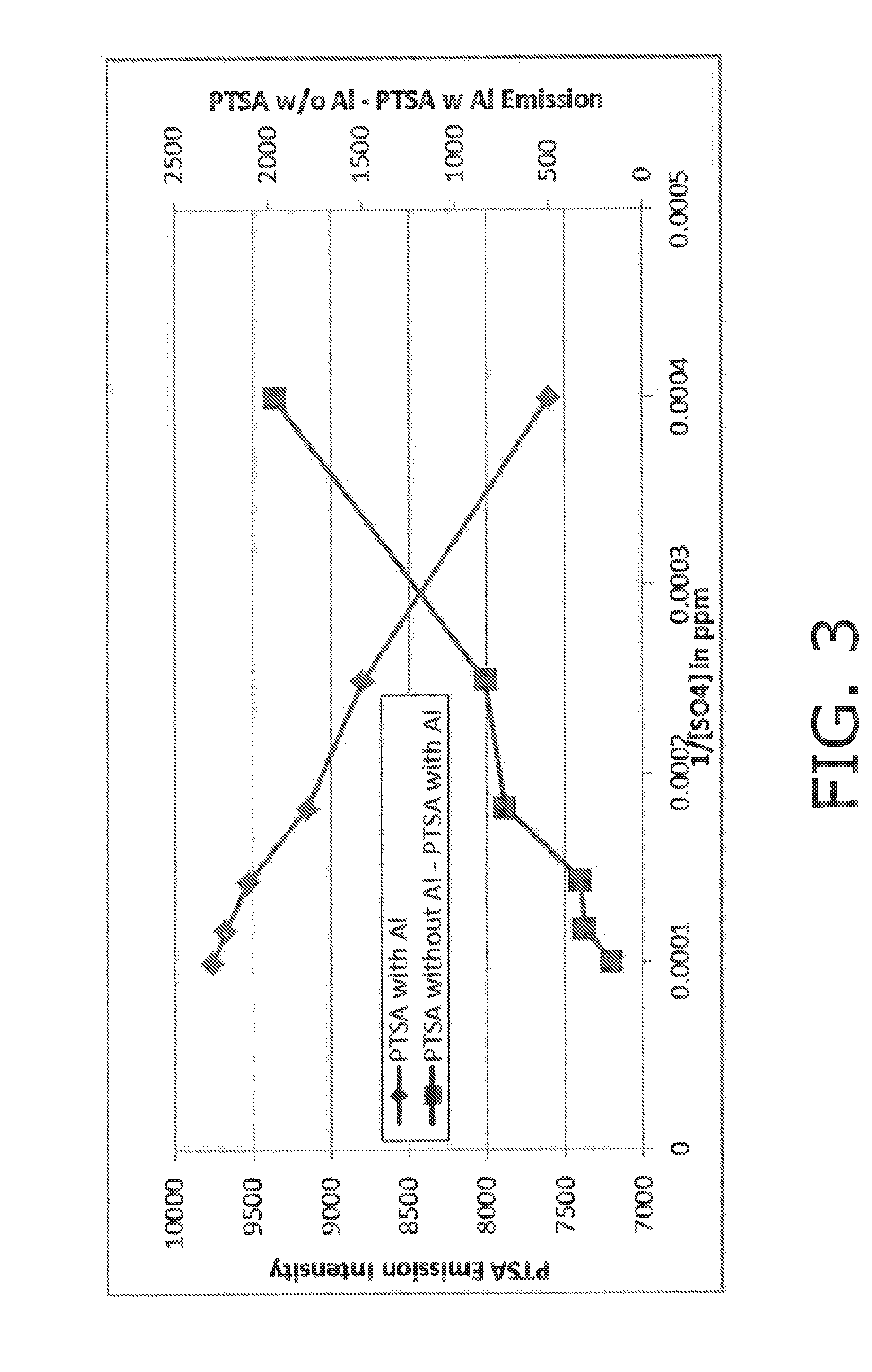Addition of aluminum reagents to sulfate-containing waste stream reduce sulfate concentration
a technology of sulfate-containing waste stream and aluminum reagent, which is applied in the direction of water/sewage treatment by ion exchange, separation process, instruments, etc., can solve the problems of sludge or plug formation, difficult separation of sulfate from water, and unwanted interaction with other materials
- Summary
- Abstract
- Description
- Claims
- Application Information
AI Technical Summary
Benefits of technology
Problems solved by technology
Method used
Image
Examples
Embodiment Construction
[0020]The following definitions are provided to determine how terms used in this application, and in particular how the claims, are to be construed. The organization of the definitions is for convenience only and is not intended to limit any of the definitions to any particular category.
[0021]“Spectrometry” and “Spectroscopy” means the process of analyzing the interaction between a sample of matter and electromagnetic radiation to determine one or more physical properties of the sample of matter. Forms of electromagnetic radiation used include but are not limited to one or more of microwave, terawave, infrared, near infrared, visible, ultraviolet, x-ray, radiation. The analysis includes measurements of one or more of the radiation's absorption, emission, fluorescence, colorometrics, color changes, reflection, scattering, inelastic scattering, impedance, refraction, and resonance by the sample of matter.
[0022]“Fluorophore” means a composition of matter which emits fluorescent light w...
PUM
| Property | Measurement | Unit |
|---|---|---|
| pH | aaaaa | aaaaa |
| pH | aaaaa | aaaaa |
| pH | aaaaa | aaaaa |
Abstract
Description
Claims
Application Information
 Login to View More
Login to View More - R&D
- Intellectual Property
- Life Sciences
- Materials
- Tech Scout
- Unparalleled Data Quality
- Higher Quality Content
- 60% Fewer Hallucinations
Browse by: Latest US Patents, China's latest patents, Technical Efficacy Thesaurus, Application Domain, Technology Topic, Popular Technical Reports.
© 2025 PatSnap. All rights reserved.Legal|Privacy policy|Modern Slavery Act Transparency Statement|Sitemap|About US| Contact US: help@patsnap.com



